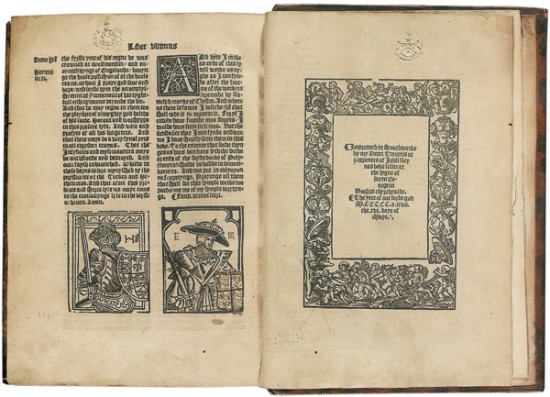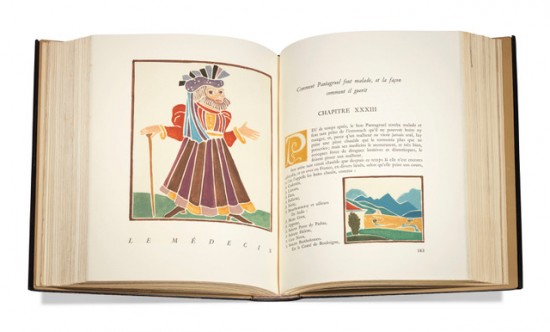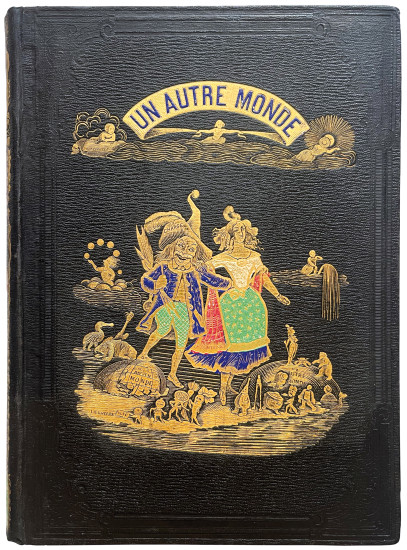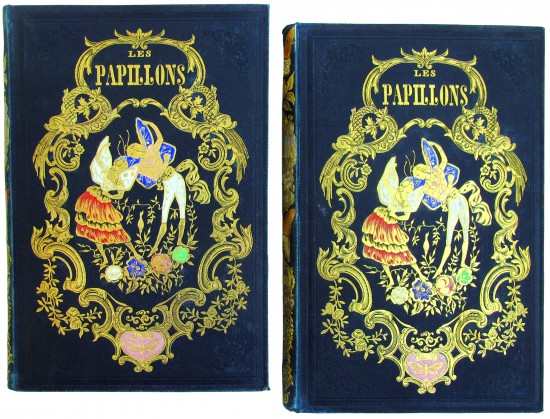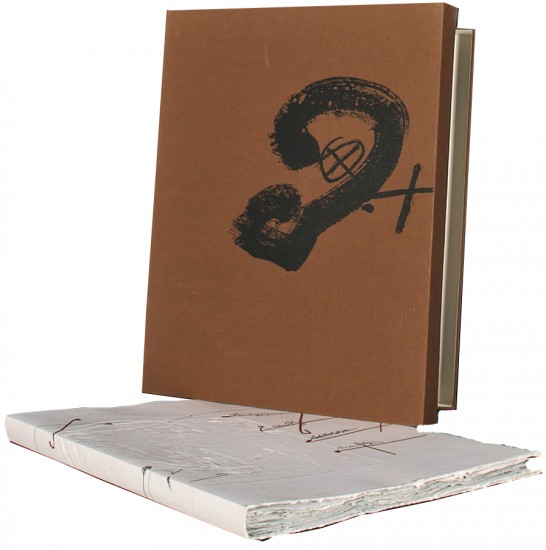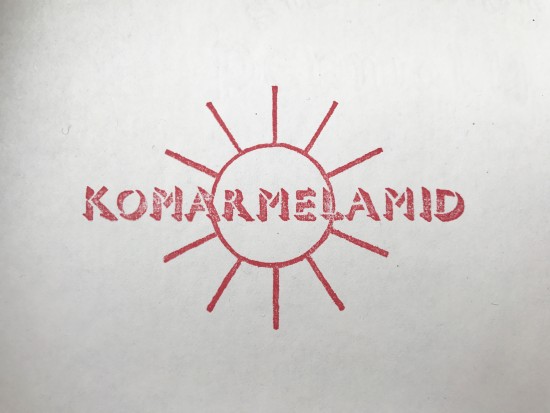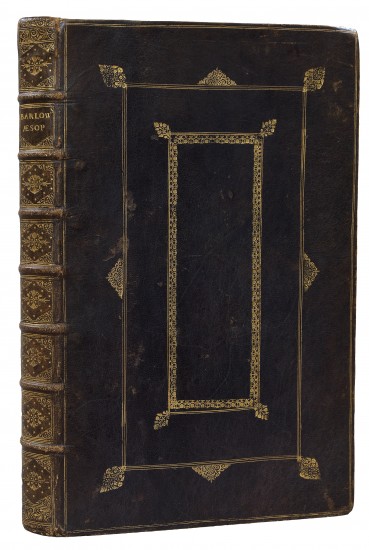Polycronycon. (Polychronicon)
Higden, Ranulf, John Trevisa and William Caxton
Southwark. Peter Treveris for John Reynes. 1527, 16th May
Sold
The first illustrated edition of this important history.
Originally composed in Latin by Ranulf Higden, a Benedictine monk, the Polycronycon was a history of the world from the Creation to 1342. At the time of composition and over the course of the next two centuries, Higden's work was enormously popular, providing important source material on the Roman world, the Norman Conquest, the relationship of British history to a wider European context as well as geography and science; the work is also an important Arthurian source.
The Polycronycon, which was continually revised, most importantly by John Malvern, is known from a large number of extant Latin manuscripts before an English translation was commissioned by Thomas, Lord Berkeley from John Trevisa which was completed on 18th April 1387. Trevisa added a 'Descrypcion of Englonde', the first such undertaking in the vernacular and updated the history to 1377. It was Trevisa's translation that was first published by Caxton in 1482, with Caxton's own continuation of the history to 1460 and a table of contents. Wynkyn de Worde reprinted Caxton's edition in 1495 with a new setting and preface and it is de Worde's edition that Treveris followed, adding all but one of the woodcuts (that for the musical notation on n5 recto, the earliest printed depiction of musical notation in this country).
The woodcuts themselves are important, not only for the development of the illustrated title-page, but also in the development of a system of mise en page that breaks up large elements of text with vignette illustrations, also providing illustrations hors texte that elucidate the work (such as the battle scene on z6 verso).
Dibdin identifies the artist for the woodcuts as John Nesbit, whereas Hodnett suggests that most of the woodcuts are by the same English artist, leaving him unnamed. The final woodcut, the earlier version of the title-page from three blocks, is, unusually, here found rubricated.
' … perhaps the most magnificent title-page, of which the early annals of English printing can boast.' (Dibdin, Ames' Typographical Antiquities).
[Provenance: early manuscript ownership signature of John Hawes to title and final leaf verso; discreet blindstamp of the library of the Earls of Macclesfield to first two leaves and final two leaves].
Originally composed in Latin by Ranulf Higden, a Benedictine monk, the Polycronycon was a history of the world from the Creation to 1342. At the time of composition and over the course of the next two centuries, Higden's work was enormously popular, providing important source material on the Roman world, the Norman Conquest, the relationship of British history to a wider European context as well as geography and science; the work is also an important Arthurian source.
The Polycronycon, which was continually revised, most importantly by John Malvern, is known from a large number of extant Latin manuscripts before an English translation was commissioned by Thomas, Lord Berkeley from John Trevisa which was completed on 18th April 1387. Trevisa added a 'Descrypcion of Englonde', the first such undertaking in the vernacular and updated the history to 1377. It was Trevisa's translation that was first published by Caxton in 1482, with Caxton's own continuation of the history to 1460 and a table of contents. Wynkyn de Worde reprinted Caxton's edition in 1495 with a new setting and preface and it is de Worde's edition that Treveris followed, adding all but one of the woodcuts (that for the musical notation on n5 recto, the earliest printed depiction of musical notation in this country).
The woodcuts themselves are important, not only for the development of the illustrated title-page, but also in the development of a system of mise en page that breaks up large elements of text with vignette illustrations, also providing illustrations hors texte that elucidate the work (such as the battle scene on z6 verso).
Dibdin identifies the artist for the woodcuts as John Nesbit, whereas Hodnett suggests that most of the woodcuts are by the same English artist, leaving him unnamed. The final woodcut, the earlier version of the title-page from three blocks, is, unusually, here found rubricated.
' … perhaps the most magnificent title-page, of which the early annals of English printing can boast.' (Dibdin, Ames' Typographical Antiquities).
[Provenance: early manuscript ownership signature of John Hawes to title and final leaf verso; discreet blindstamp of the library of the Earls of Macclesfield to first two leaves and final two leaves].
[398 leaves; ff. (50), cccxlvi, (1)]. Printed in Black Letter, double column, 44 lines per page. Folio. Woodcut title page printed in red and black from five blocks, comprising crown; banner with medallion portrait of Henry VIII, the royal arms and the arms of the City of London in red; elaborate calligraphic title in red; large vignette of St. George and the Dragon; John Reynes' printer's mark in red [McKerrow 55], woodcut portraits of kings, queens and knights from six blocks with repetitions throughout [Hodnett 2490; 2492 - 2496], woodcut musical notation depicting diapason on n5 recto, full page woodcut battle scene with double borders depicting English and French armies on z6 verso [Hodnett 2491], colophon with elaborate woodcut border depicting bear hunting with dogs [McKerrow and Ferguson 12], final woodcut with rubrication on verso of colophon - an earlier version of that for the title [McKerrow 61], woodcut historiated and decorative initials throughout. Full late sixteenth or early seventeenth century speckled calf, boards with double rules in blind, banded spine with gilt decoration in six compartments, red speckled edges.
#32732
